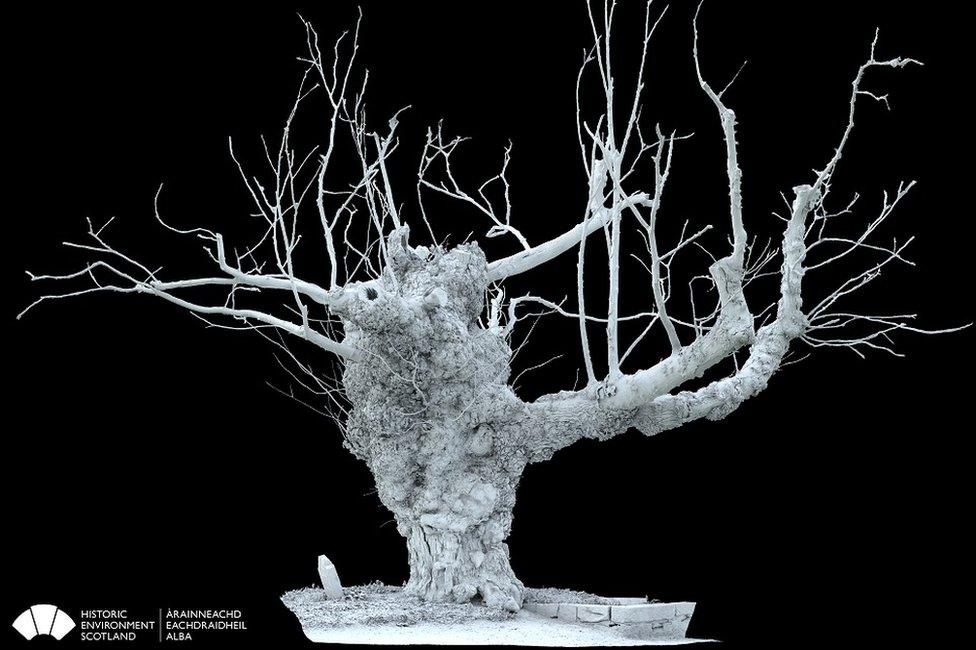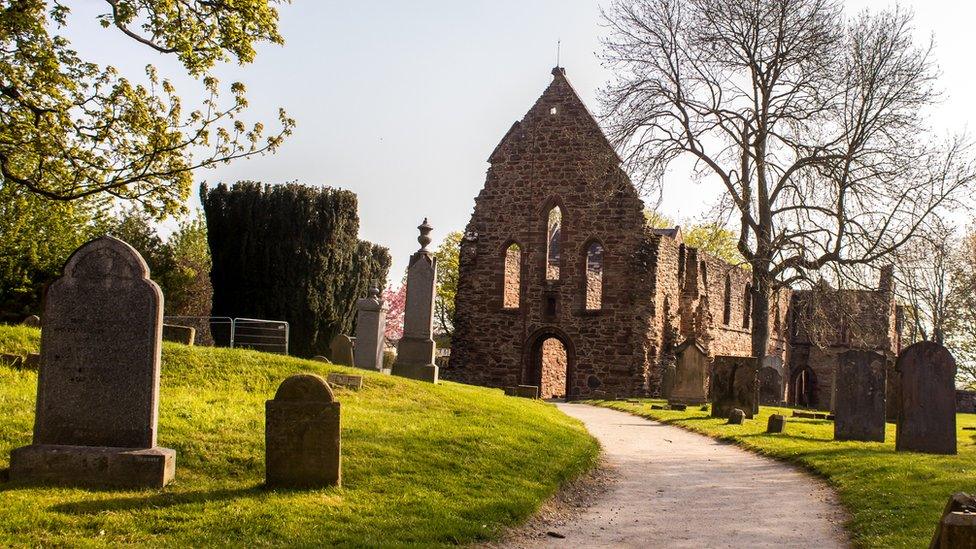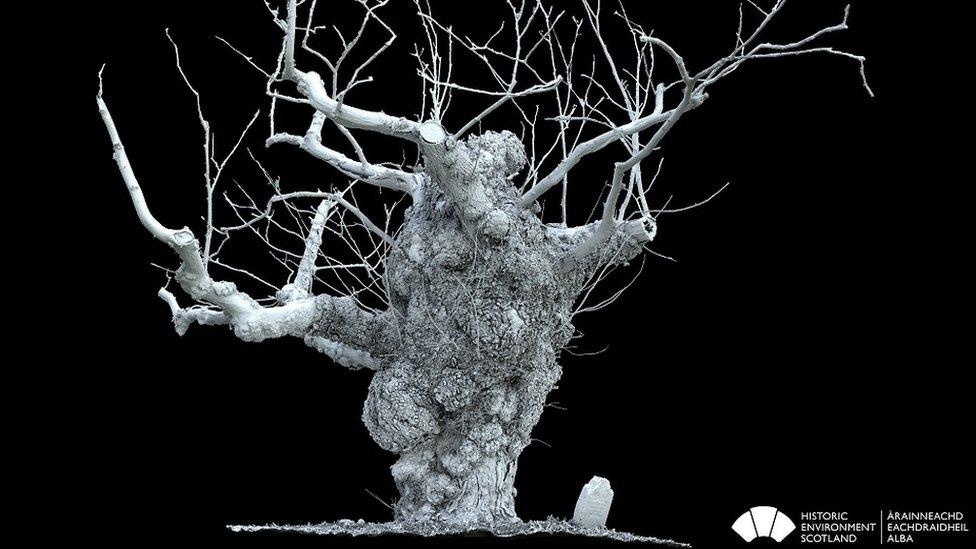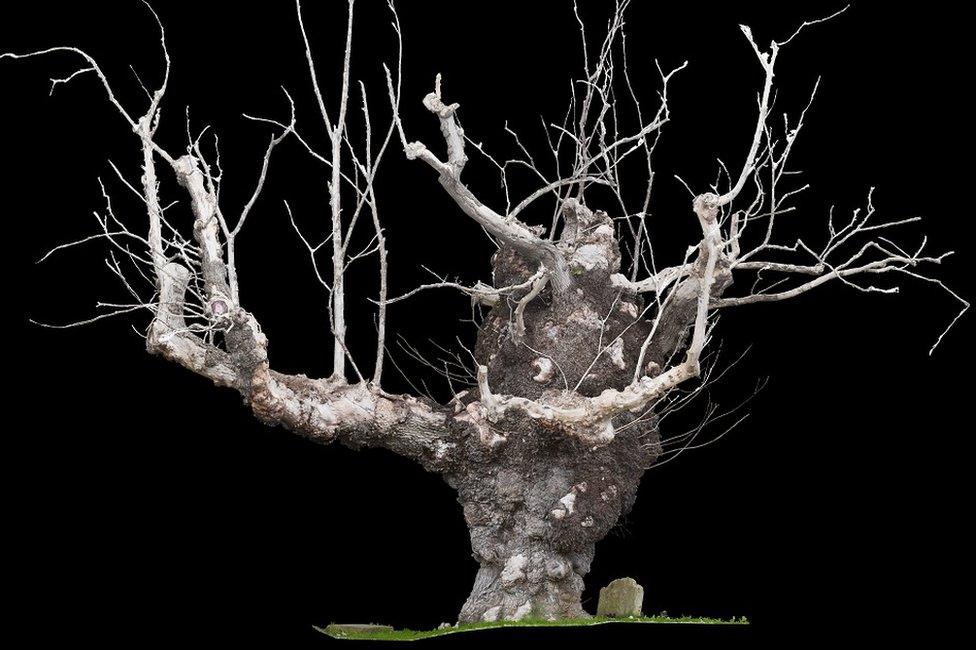Disease killing 'Europe's oldest' elm tree
- Published

The Beauly elm has been laser-scanned to create digital images of the tree
What is believed to be Europe's oldest elm tree has succumbed to Dutch Elm Disease and is dying, say experts.
The wych elm at Beauly in the Highlands is almost 800 years old, with references to the tree found in records going back to medieval times.
Historic Environment Scotland (HES) has laser-scanned the elm as part of work to document ancient Scottish trees.
HES has previously used the technology to create digital images of historic buildings.
The tree is at Beauly Priory, which was built for monks of the Valliscaulian order.
Sarah Franklin, a landscape manager at HES, said historical documents confirmed the existence of the elm at the time the priory was established in the 1230s.
HES has been trying to establish if other elms are as old as the Beauly tree.
Ms Franklin said: "We couldn't find other elms older in Europe. There is one in Italy 760 years old, but none reaching 800 years old."
She said the Beauly elm was an "amazing tree" which was "gnarly and gothic in appearance."
"It looks like something out of a Hammer horror film," she said.

The long-ruined Beauly Priory was built for an order of monks in the 1230s
Earlier this year it was confirmed just 5% of the elm was living. Ms Franklin said: "The Beauly elm has succumbed to Dutch elm disease."
However, she said the tree would continue to be "managed in situ" because it still played an important part in the biodiversity of the local area and was a tree of "some significance".
The laser scanning has led to the creation of digital 3D model which can be viewed online, external, with viewers able to see the elm from different angles.

The Beauly elm is described as "gnarly and gothic" in appearance

The technology used to scan the tree has previously been used by HES to create digital images of historic buildings
Dutch Elm Disease is a fungal infection spread by tiny bark beetles. It can rapidly wither and kill healthy trees.
The disease arrived in the south of England in the 1960s and since then it has spread across much of the British mainland, massively reducing the elm population.
In recent years it has been moving west through Aberdeenshire and Moray and into the Highlands, but it was hoped that the lower density of elm trees, cooler climate and prevailing winds would slow down its progress.
In 2018, warm weather was blamed for speeding up the spread of Dutch Elm Disease in the Inner Moray Firth area of the Highlands.

An elm dubbed The Last Ent of Affric was named Scotland's tree of the year in 2019
Wych elm is the only elm regarded as being truly native to the UK, according to the Woodland Trust.
It usually grows in hilly or stoney woodlands, or near streams and ditches and is hardier than the English elm. Its name refers to how easily the wood can be bent.
A lone elm whose remote location has protected it from Dutch Elm Disease was named Scotland's Tree of the Year in 2019.
The Last "Ent" of Affric beat competition from five other finalists in the online vote run by Woodland Trust Scotland.
Ents are mythological tree creatures from JRR Tolkein's Lord of the Rings, which serve as guardians of the forest.
- Published14 November 2019
